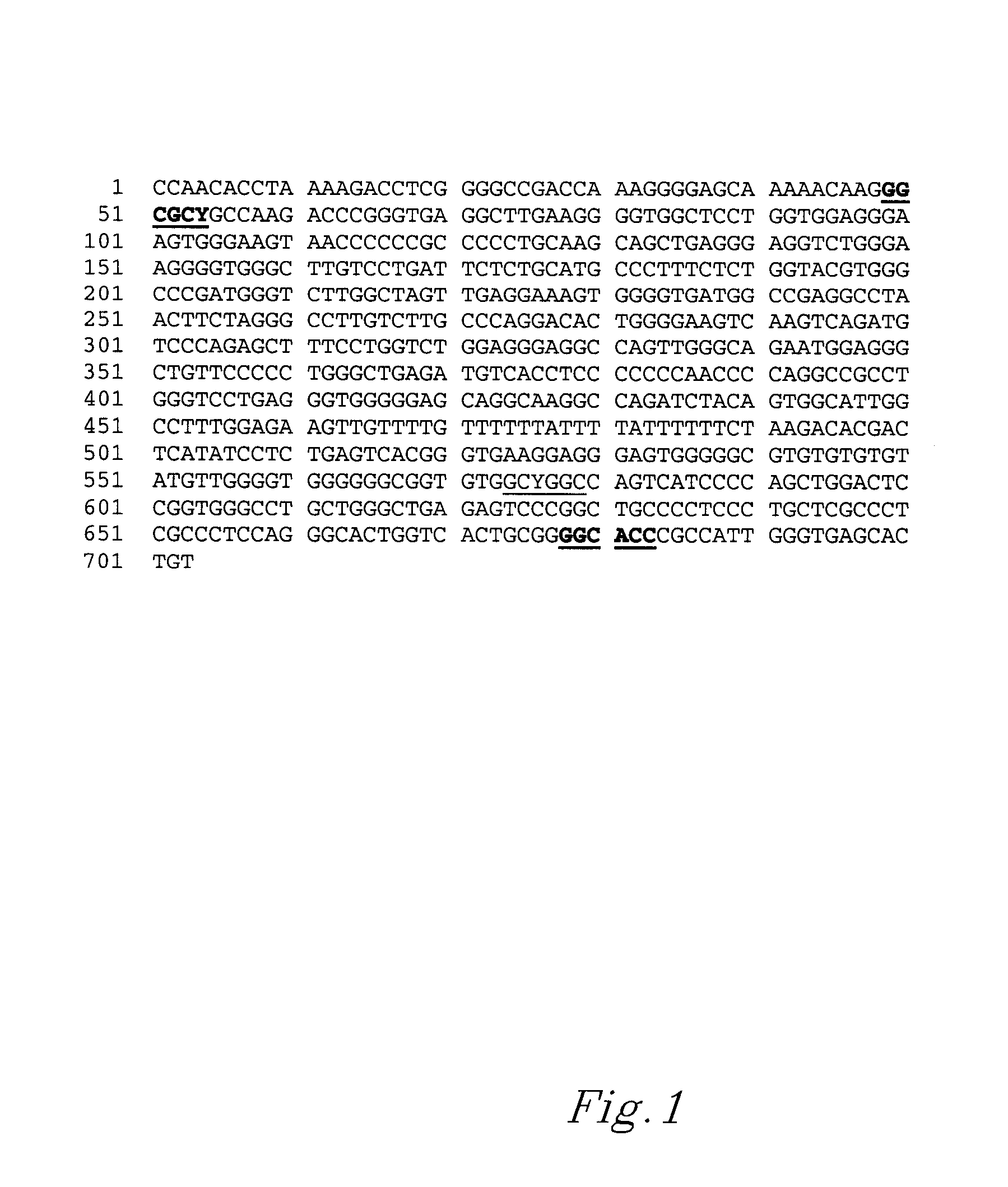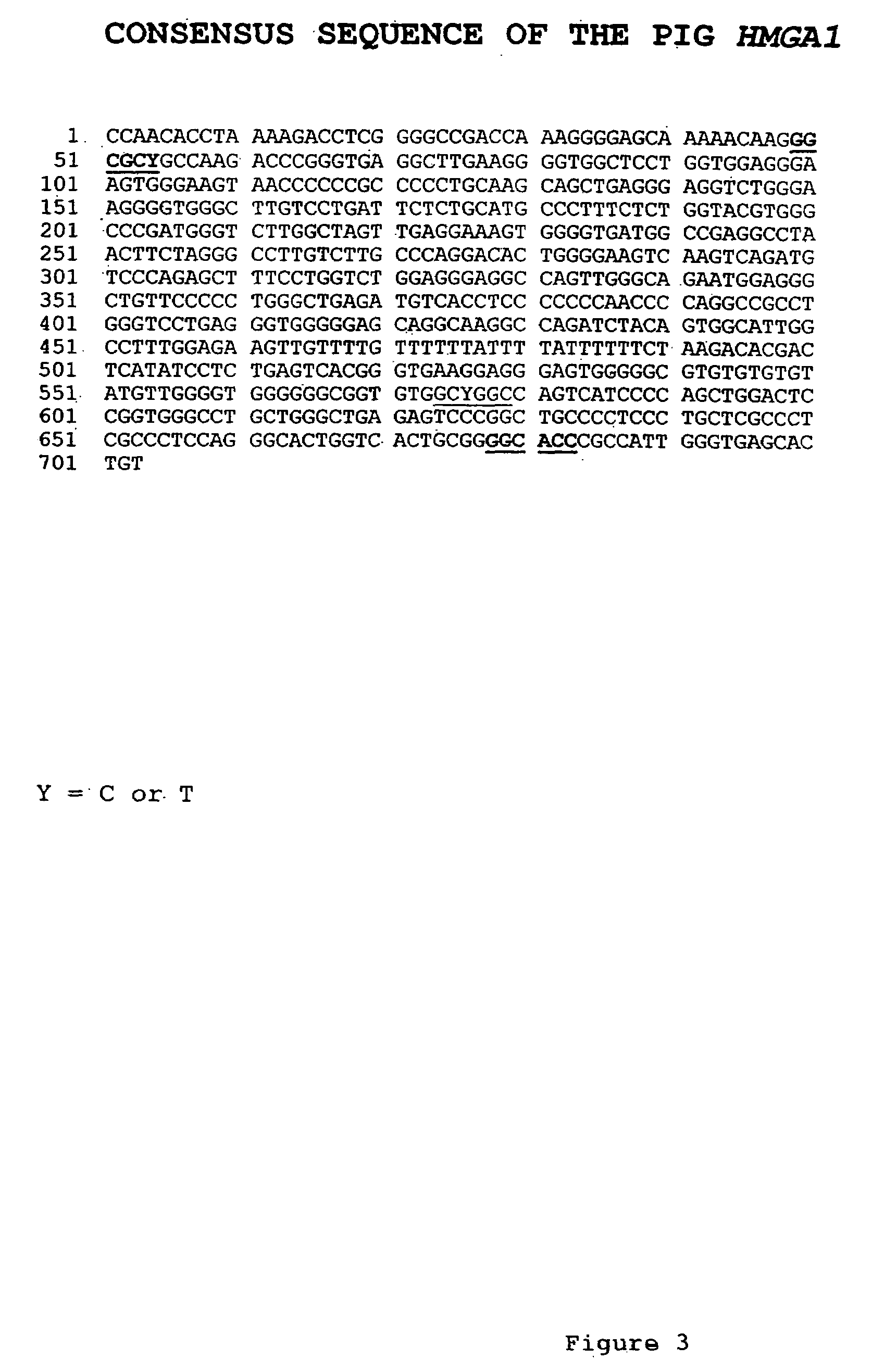HMGA alleles and use of the same as genetic markers for growth, fatness, meat quality, and feed efficiency traits
a technology of alleles and genetic markers, applied in the field of detection of genetic differences among animals, can solve the problems of insufficient consideration of genetic variability, data collection on culled animals, and low heritability of desired traits, and achieve the effect of increasing the accuracy of selection
- Summary
- Abstract
- Description
- Claims
- Application Information
AI Technical Summary
Benefits of technology
Problems solved by technology
Method used
Image
Examples
examples
[0094]The HMGI (HMGA under a new nomenclature; Bustin, 2001) gene family consists of two genes that encode three proteins (HMG-I, -Y, and -C) associated with chromatin structure and control of transcription. The HMGI / Y proteins are products of alternatively spliced RNA of a single gene, but a different gene encodes HMGIC.
[0095]The HMGIY (HMGA1) gene is located at chromosomal region 6p21 in humans (Friedmann et al., 1993) and may be involved in the regulation of gene expression for cell growth and differentiation (Reeves and Beckerbauer, 2001). Therefore, aberrant or over-expression of the HMGI / Y protein has been strongly correlated with many types of cancer formation (Hess, 1998; Tallini and Dal Cin, 1999; Reeves, 2000). As the HMGI / Y proteins play a transcriptional role in the expression of adipocyte-specific genes, the HMGI / Y might have an important role in adipocytic cell growth and differentiation (Melillo et al., 2001).
[0096]The human HMGIC (HMGA2) gene was physically assigned ...
PUM
| Property | Measurement | Unit |
|---|---|---|
| pH | aaaaa | aaaaa |
| pH | aaaaa | aaaaa |
| temperatures | aaaaa | aaaaa |
Abstract
Description
Claims
Application Information
 Login to View More
Login to View More - R&D
- Intellectual Property
- Life Sciences
- Materials
- Tech Scout
- Unparalleled Data Quality
- Higher Quality Content
- 60% Fewer Hallucinations
Browse by: Latest US Patents, China's latest patents, Technical Efficacy Thesaurus, Application Domain, Technology Topic, Popular Technical Reports.
© 2025 PatSnap. All rights reserved.Legal|Privacy policy|Modern Slavery Act Transparency Statement|Sitemap|About US| Contact US: help@patsnap.com



